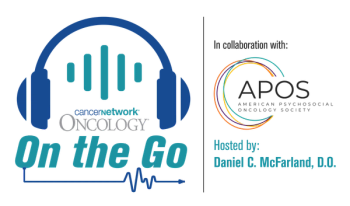
Oncology NEWS International
- Oncology NEWS International Vol 4 No 2
- Volume 4
- Issue 2
ACS Panel : Thorough Evaluation May Point to a Reversible Cause of Post-prostatectomy Urinary Incontinence
PHILADELPHIA--Urinary incontinence probably occurs as a complication of radical prostatectomy more often than series reported in the literature suggest, said Jerry G. Blaivas, MD, in a panel discussion of complications of prostate cancer held at the American Cancer Society's National Conference on Prostate Cancer.
PHILADELPHIA--Urinary incontinence probably occurs as a complicationof radical prostatectomy more often than series reported in theliterature suggest, said Jerry G. Blaivas, MD, in a panel discussionof complications of prostate cancer held at the American CancerSociety's National Conference on Prostate Cancer.
Dr. Blaivas, clinical professor of urology, New York Hospital,presented an approach for managing the relatively easily treatedcauses of early incontinence, as well as the more difficult evaluationand treatment of persistent incontinence.
Urinary incontinence following radical prostatectomy is oftena transitory problem that can be easily treated if a reversiblecause is identified, or that may resolve spontaneously, Dr. Blaivassaid. Persistent problems can be managed with a variety of approaches,including drugs, biofeedback, and the implantation of a sphincterprosthesis; the choice depends on the underlying pathology andthe patient's preference.
Urinary incontinence can stem from either a bladder abnormalityor a sphincter abnormality. Detrusor overactivity, leading toinvoluntary contractions of the bladder, is most often causedin the post-prostatectomy patient by urinary tract infection ora retained suture, Dr. Blaivas said.
Possible Unrelated Causes
Other potential causes of detrusor overactivity that are unrelatedto prostate surgery, such as bladder stones, low bladder compliance,or carcinoma of the bladder, should be investigated before treatingthe patient.
Sphincter abnormalities following radical prostatectomy are nearlyalways the result of scarring, Dr. Blaivas said.
The initial step in evaluating the post-prostatectomy patientwith urinary incontinence is to identify any remediable causes(that is, urinary tract infection or urethral obstruction) andtreat them, he stressed. If neither of these causes is found,the underlying pathophysiology should be investigated as a guideto eventual treatment.
Evaluation should include a physical examination, detailed patienthistory, and pad tests. Having the patient keep a symptom diaryis useful in confirming his complaints and providing more detail.Once these steps have led to the formulation of a preliminarydiagnosis, urodynamic studies should be carried out to try toreproduce the symptoms. Cystoscopy should also be carried outin patients with post-prostatectomy incontinence.
These evaluations should lead to the conclusion that incontinenceis the result of either detrusor overactivity or scarring of thesphincter, Dr. Blaivas said. Once easily remediable causes ofdetrusor overactivity have been treated or ruled out, the problemmay be treated with either drugs or behavioral techniques.
Treating Persistent Problems
"Behavior modification is a very effective treatment forinvoluntary detrusor contractions and is our first-line treatmentof choice," the urologist said. However, this approach isvery time consuming, which may lead to insurance reimbursementproblems. In his experience, behavior modification, if done properly,requires one-on-one sessions of about an hour each once a weekover 8 to 12 weeks and is effective in more than 50% of patients.
Two medications with anticholinergic effects, oxybutynin chloride(Ditropan and others) and imipramine, are also used to treat incontinence,but are not effective in as high a proportion of patients as isbehavior modification, he said. Other treatments that are availablebut have been little studied include electrical stimulation andbiofeedback.
Implantation of a sphincter prosthesis is the only predictablyeffective treatment for incontinence that results from scarringof the urinary sphincter. "In the published literature, thisis effective in 80% to 90% of patients," Dr. Blaivas said.However, these prostheses are underutilized in patients who havejust undergone a radical prostatectomy.
"These patients have just had a big operation, and they don'twant another one; they would rather try other things first beforeundergoing implantation of a prosthesis," he said. Unfortunately,biofeedback and medications are rarely effective for sphinctericincontinence, and periurethral collagen injections only work ina minority of patients, he added.
Articles in this issue
almost 31 years ago
FTC Advised to List Tar and Nicotine Levels Directly on Cigarette Packagesalmost 31 years ago
Multidisciplinary Approach Urged For Pain Reliefalmost 31 years ago
FDA Approves New Indication for Neupogen: Chronic Neutropeniaalmost 31 years ago
Department of Labor Wants to Study Possible Occupation-Cancer Linksalmost 31 years ago
Navelbine Is Now Available for Use in Inoperable Advanced Stage NSCLCalmost 31 years ago
ASH Panel: How Many Hemotologists/Oncologists Are Enough?almost 31 years ago
Mammography Van Brings Breast Cancer Screening to the Workplacealmost 31 years ago
FDA to Build $600 Million Campusalmost 31 years ago
Finasteride Studied as Prostate Ca PreventiveNewsletter
Stay up to date on recent advances in the multidisciplinary approach to cancer.


















































































